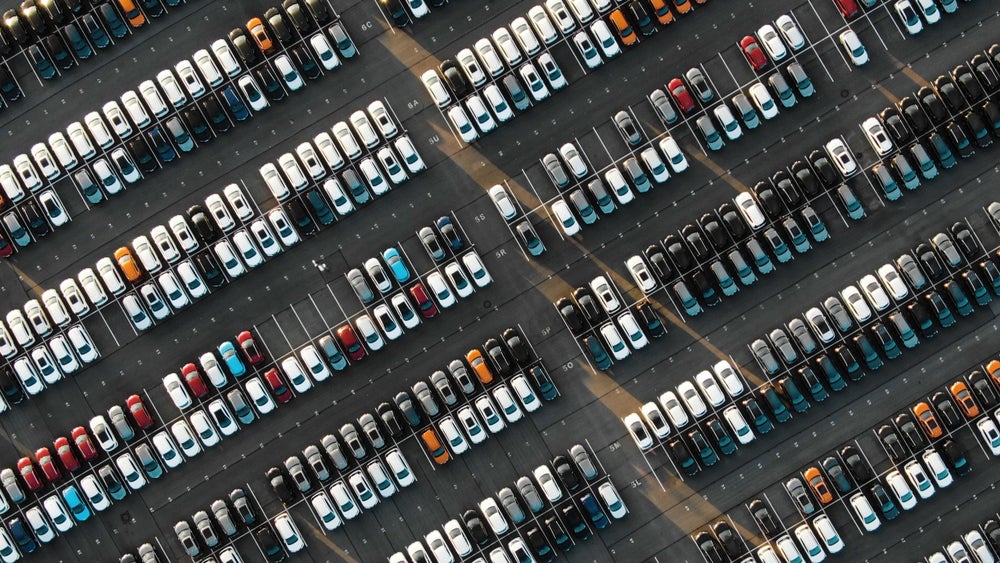 Automotive Performance in Mexico, Brazil and Argentina: NAFTA and MERCOSUR
Automotive Performance in Mexico, Brazil and Argentina: NAFTA and MERCOSUR
Between 1994 and 2000 the world’s leading vehicle manufacturers invested $30 billion in Mexico, Brazil and Argentina, Latin America’s three most important automotive production sites and markets. Typically, these countries account for more than 90% of the output and sales in Latin America’s 31 nation states.
Last year, in 2000, vehicle manufacturers in the three countries produced 3.93 million passenger cars and trucks (includes heavy trucks and buses), 23% more than in 1999. In unit terms the increase amounted to 745,000 vehicles: Mexico contributed 390,000, Brazil 320,000 and Argentina only 35,000. According to PWC Autofacts, an automotive research and consulting firm, the three countries accounted for approximately 7% of the 55.5 million light vehicles (excludes heavy trucks and buses) produced worldwide in 2000. Mexico ranked 8th in global light vehicle output, Brazil 11th and Argentina 21st.
“Mexico’s new, lean plants have focused on export production, especially to the United States.” |
Although these figures appear to be very positive they lose their glitter once put in perspective. For example, output among Mexico, Brazil and Argentina was only a scant 1% higher in 2000 than it was in 1997. Even more disheartening is the $3.0-$3.5 billion that the automakers lost in Brazil and Argentina during the past two years following Brazil’s de-valuation of the real on January 13, 1999. Only Mexico recently has returned a handsome profit to the vehicle builders on their huge capital infusions because its automakers have been running their plants at virtually full capacity since 1998. By sharp contrast, the addition of a dozen new plants in Brazil and Argentina during the 1995-2000 timeframe has created a dangerous overcapacity problem.
NAFTA
Investment in Latin America’s automotive industry was spurred by vigorous economic growth and trade agreements that provided the vehicle manufacturers with clearly defined rules of the game, crucial for planning. For example, in 1994 the North American Free Trade Agreement, NAFTA, was launched. Under its provisions Mexico’s key vehicle assemblers-General Motors, Ford, Nissan,
How well do you really know your competitors?
Access the most comprehensive Company Profiles on the market, powered by GlobalData. Save hours of research. Gain competitive edge.

Thank you!
Your download email will arrive shortly
Not ready to buy yet? Download a free sample
We are confident about the unique quality of our Company Profiles. However, we want you to make the most beneficial decision for your business, so we offer a free sample that you can download by submitting the below form
By GlobalDataDaimlerChrysler, Volkswagen and Nissan-have been able to integrate production and marketing schedules with their larger US and Canadian operations. What has emerged from NAFTA, therefore, is a truly North American automotive industry in which Mexico has been able to rationalise production for the first time. Between 1994 and 2000 the automakers invested $15 billion to build new plants and modernise old ones, according to Cesar Flores, president of Mexico’s Motor Vehicle Manufacturers Association (AMIA).
Above all, Mexico’s new, lean plants have focused on export production, especially to the United States. The top exports range from unique niche vehicles (Daimler Chrysler PT Cruiser and VW New Beetle) to compact cars (Nissan Sentra and Ford Focus/Escort), SUVs (GM Suburban) and pickups (DaimlerChrysler Ram 1500/2500 series). By transforming itself into an export platform (76% of production in 2000, as opposed to only 24% for the domestic market) the Mexican automotive industry was able to recover quickly from the country’s catastrophic peso devaluation in December 1994 that lowered domestic vehicle sales in 1995 by 70%.
MERCOSUR
Unlike NAFTA, the 1995 and 1996 Bilateral Brazil-Argentina Automotive Sector Agreements, negotiated by the administrative Council of the Common Market of the Southern Cone (MERCOSUR: Brazil, Argentina, Uruguay and Paraguay), have not provided a solid foundation for long-term automotive growth. Initially, however, they produced notable increases in output, sales and bilateral trade under which vehicles could be traded freely. Clearly, these provisions encouraged the vehicle assemblers to coordinate operations between the two countries while maintaining high tariff barriers on passenger cars and trucks that were imported from outside the MERCOSUR bloc.
“bilateral agreements have made it extremely difficult for the countries to export beyond MERCOSUR.“ |
Under the bilateral agreements automakers in Brazil were permitted to import vehicles duty-free from Argentina (and vice-versa) as long as they satisfied two requirements. First, at least 60% of a vehicle’s content had to be produced in one of the four MERCOSUR countries. In practice this meant in Brazil or Argentina since Paraguay does not manufacture vehicles, and Uruguay produces less than 10,000 units annually. Second, automotive trade between Brazil and Argentina had to be balanced.
Between 1994 and 1997 combined vehicle output (26%) and sales (24%) in Brazil and Argentina grew rapidly. By 1997 they reached 2.52 million and 2.37 million units, respectively. Most of this dramatic growth came from Brazil. In 1997 Brazilian passenger car and truck sales soared to almost 2 million. Given such bullish performance the automakers predicted that by 2000 sales in MERCOSUR would reach 3 million: 2.5 million in Brazil and 0.5 million in Argentina.
In anticipation of such growth they invested $15 billion in Brazil and Argentina in the 1994-2000 timeframe and built their dozen new plants, mostly to manufacturer small B-plat-form subcompact passenger cars with 1.0L engines. These account for two-thirds of all cars produced in Brazil. Unfortunately for the automakers, combined sales between Brazil and Argentina in 2000 amounted to only 1.78 million units-1.22 million less than forecast. The results of such overbuilding have been catastrophic, and the bilateral trade agreements have exacerbated the situation. Specifically, the trade balancing provisions have led to a duplication of production facilities in which the automakers have been forced to produce similar vehicles in both countries and have placed severe limits on trade between the two countries. Also, by binding Brazil and Argentina to each other the bilateral agreements have made it extremely difficult for the countries to export beyond MERCOSUR.
These problems have strained relationships between Brazil and Argentina and delayed the signing of the MERCOSUR Automotive Regime (2001-2005) by a year-the successor to the 1996 Bilateral Brazil-Argentina Automotive Sector Agreement. Of course, the chief causes of the downturn in Brazil and Argentina were external: Brazil’s devaluation of the real on January 13, 1999 and the subsequent recessions that it triggered throughout MERCOSUR.
 Mexico, 1997-2000
Mexico, 1997-2000
Between 1997 and 2000 Mexican vehicle output increased by 42%, from 1.37 million to 1.92 million units, a record, in direct response to both a booming US market and strong domestic growth. During this four-year period GDP grew at an average rate of 5.6% per year. In 2000, therefore, Mexican automakers registered their best-ever year in sales (900,000 units).
Since 1998 several of the manufacturers have become very profitable because their plants have been running at practically full capacity. Although profit figures for Mexico’s automotive subsidiaries are not disclosed publicly it is probable that companies such as General Motors and Daimler-Chrysler, both of which exported 205,000 large SUVs (Suburban) and 187,000 pickups (Ram 1500/2500), respectively, and Volkswagen, which shipped 325,000 Jettas and New Beetles to the United States and Canada in 2000, all have earned between $300 million and $600 million annually during the past three years.
Mexico’s rising production and profitability are also the result of NAFTA’s elimination of US import tariffs on truck exports from Mexico and due to the phasing out of trade balancing restrictions that have enabled Mexico’s manufacturers to import almost 50% of the vehicles they sell domestically. Finally, Mexico has had the good fortune to grow at precisely the moment that the US market experienced its longest economic expansion in history. In 2000, a record 18 million passenger cars and trucks were sold, 1.2 million of which were exported from Mexico (to put this in perspective, 84% of Mexico’s exports are destined for sale in the United States).
 Brazil
Brazil
By sharp contrast with Mexico’s situation South America’s automotive industry has been in a shambles since 1998. During the fourth quarter of 1997 Brazil’s economy, the largest on the continent, began slowing dramatically. By 1998 it plunged into recession following the Asian and Russian financial crises and the constant attacks of international speculators on its overvalued currency. GDP grew by an anemic 0.2% in 1998 and 0.9% in 1999, after averaging almost 3.5% between 1994 and 1997.
Throughout 1998 the government depleted its international reserves by using billions of dollars to purchase local currency to strengthen the price of the real, but it recognised belatedly that such action was ineffective. Ultimately, it was forced to allow the real to float freely in international markets. This decision has resulted in a devaluation of approximately 44% in dollar terms and has made Brazilian exports, especially passenger cars and trucks, much more competitive globally
In step with a faltering economy Brazilian vehicle production declined by 19%, from 2.07 million to1.67 million units between 1997 and 2000. Although the industry staged a smart recovery in 2000 output, the most crucial measure of industry performance and profitability, it remained stuck at the 1995 level. In 1999 the top four manufacturers in Brazil-Ford, Volkswagen, General Motors and Fiat-lost $1.7 billion, according to Carlos Pinheiro Neto, president of Anfavea, the Brazilian Motor Vehicle Manufacturers Association. If DaimlerChrysler, Renault and the other assemblers are included, then industry losses totaled nearly $2.5 billion.
Undoubtedly, 2000 was a much better year. GDP growth of 4.2%, the best since 1995, spiked a significant automotive production and sales recovery but the industry still lost about $1.1 billion. Volkswagen, Renault, Ford and DaimlerChrysler continued to lose hundreds of millions of dollars. Only General Motors (about $50 million) and Fiat, its strategic alliance partner, made a profit.
These losses are the result of overcapacity, the outcome of the automakers’ aggressive expansion strategies that they based on earlier growth projections. In 1999 Brazil’s vehicle production amounted to only 59% of its installed capacity, compared with 63% in 2000, as a result of all the new plants that it built: Renault (1999), VW/Audi (1999), DaimlerChrysler (1999), General Motors (1999) and Peugeot (2000-2001)
 Argentina
Argentina
While the devaluation derailed growth and profitability in Brazil it crippled Argentina’s automotive industry and bilateral trade because Argentina’s currency, the peso, has been pegged 1:1 against the US dollar for a decade. Under this convertibility policy, which obliges the Central Bank to redeem one Argentine peso for one US dollar upon demand, Argentina’s manufacturing costs have become about 25% greater than Brazil’s since the devaluation. This disparity between the value of the peso and the real reduced vehicle production by 26% between 1998 and 2000, from 458,000 to 340,000 units. Since nearly 50% of Argentina’s vehicle output is targeted for shipment to Brazil the export sector was hardest hit by the devaluation. Made-in-Argentina vehicles simply became too expensive.
Between1998 and 2000 Argentina’s total vehicle exports declined by 43%. More than 95% of its 135,000 passenger cars and trucks in 2000 were sent to Brazil. In dollar terms, bilateral automotive trade, including auto parts, dropped from $8 billion to $6.8 billion during the 1998-2000 period, and about 30 auto parts suppliers closed their plants in Argentina and moved to Brazil in search of cheaper labour and a larger market.
GDP contracted by 3.4% in 1999. Last year it was absolutely flat (0.0%). This very poor economic performance led to a 19% drop in passenger car and truck sales and has spurred Brazil to search for other export targets. Suddenly, Mexico’s growing market and access to the United States have become a priority for Brazilian vehicle manufacturers. As evidence of this growing relationship the two countries signed a two-year bilateral automotive trade agreement that already has made Mexico one of Brazil’s top export markets.
From the vantage point of profitability Argentina’s vehicle manufacturers lost $600 million in 1999 and another $600 million last year, according to Cristiano Rattazzi, president of Adefa, the Argentine Motor Vehicle Manufacturers Association. Rattazzi also predicts national automakers will lose the same amount this year as Argentina’s vehicle sales plummet to 250,000 and production to 300,000 units.
“During the next five years Latin America’s automotive industry probably will change dramatically.“ |
As in Brazil, these financial woes are the product of overcapacity, a problem that is even more severe in Argentina. In 1999 the vehicle manufacturers utilised only 35% of their installed capacity, compared with 40% in 2000.
OUTLOOK
During the next five years Latin America’s automotive industry probably will change dramatically. Trade barriers between North and South America will be reduced sharply, especially between Mexico and MERCOSUR, as evidenced by the recent Bilateral Brazil-Mexico Trade Agreement (2000) that lowered import tariffs on vehicles to 8%. This treaty already has made Mexico into a major export destination of Brazil’s automakers, and in the future it will offer them access to the coveted US market. In addition, integration between Mexico and Brazil (and Argentina, too) will accelerate because the vehicle manufacturers will persuade government leaders that only such trade integration will enable them to rationalize Latin American production and end their multibillion losses in South America.
Currently, the Mexican and Brazilian governments are negotiating a wider agreement that will include auto parts and other key sectors. Subsequently, Argentina and MERCOSUR will be included, too, and plans for official consultations that will affiliate Mexico with MERCOSUR are being made for the second half of this year.
However, neither integration between Mexico and MERCOSUR nor even a Free Trade Agreement of the Americas (FTAA) that unites NAFTA and MERCOSUR will resolve the overcapacity problem in Brazil and Argentina that has averaged nearly 1.5 million units during the past two years. For this to occur major plant closings in both countries are inevitable.
Author: Marc N. Scheinman
This exclusive new report assesses the current situation and predicts which companies-and countries-will be the biggest winners and losers in the next five years:- The automotive industry in Latin America: Mexico, Brazil and Argentina Forecasts to 2005 |






